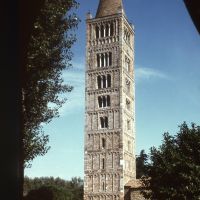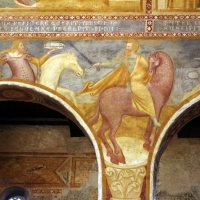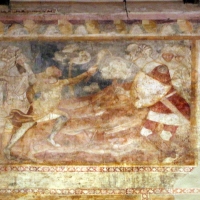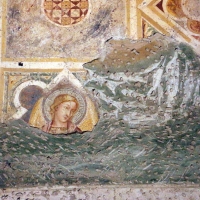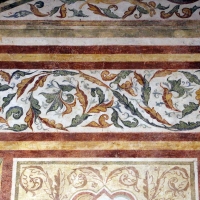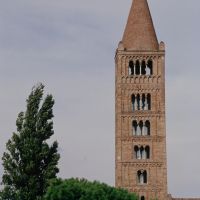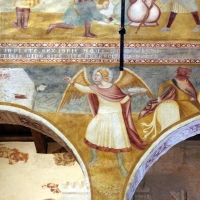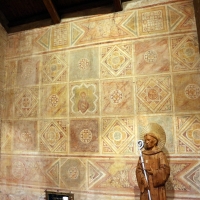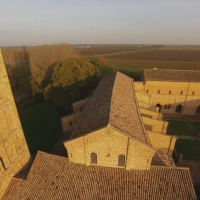
Pomposa Abbey
Codigoro
Where:
Contacts
Pomposa Abbey (Codigoro) dates from the 9th century and is one of the most important abbeys of northern Italy. Shielded by swamps on one side and by the Adriatic Sea on the other, for centuries the Abbey was a prominent cultural and educational centre.
As anyone who has ever laid eyes on it will tell you, Pomposa Abbey is a hidden gem and a sight to behold. Situated in the municipality of Codigoro (a few kilometres away from Ferrara and Comacchio) along the ancient “via Romea”, the Benedictine Abbey of Pomposa was one of the most influential cultural centres of medieval Italy. Even though the abbey complex as we know it was built in 900, the first monastery was founded by the Bobbio Abbey monks between the 6th and 7th centuries.
The place chosen for its construction had a twofold purpose: on the one hand it was a strategic spot along the Romea Germanica Way, which took pilgrims from the North Sea to Rome, on the other hand it was situated on the so-called Insula Pomposiana—a strip of land surrounded by two arms of the Po river, the swamp and the Adriatic Sea, which made it very easy to defend.
During the Middle Ages, the Abbey gained substantially in wealth (in the 14th century it had extensive grants of land, including a salt mine in Comacchio) and played a key role in the cultural life and development of medieval Italy thanks to the tireless work of its scribe monks. What is more, the Abbey was home to many scholars and innovators of the time, including Guido d'Arezzo, who invented the modern musical notation.
The abbey complex includes the Church of Santa Maria with its wonderful narthex and its majestic, 48-metre high Romanesque bell tower. The church has three naves divided by Roman and Byzantine columns, which is not surprising given the proximity of Codigoro to Ravenna. With its magnificent frescoes and its original mosaic inlaid stone pavement, the church is considered to be a true masterpiece of medieval art.
When it comes to the monastery, only the beautiful chapter hall, the refectory with its stunning frescoes and Palazzo della Ragione (facing the remains of the original cloister), where for centuries the Abbots managed one of the most thriving economic and cultural centres of the Middle Ages, are open to visitors.
What once was the dormitory now houses the Pomposiano Museum, which hosts an impressive collection of artefacts and frescoes from the abbey complex and is definitely worth a visit.

